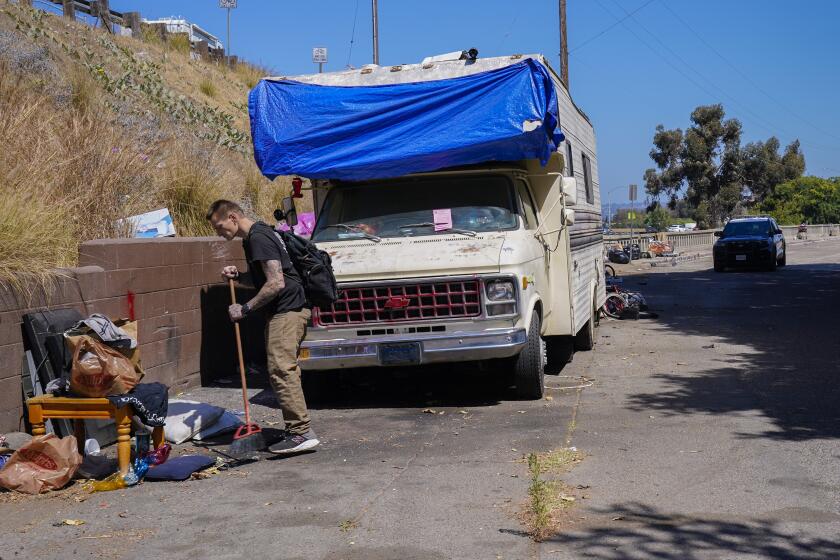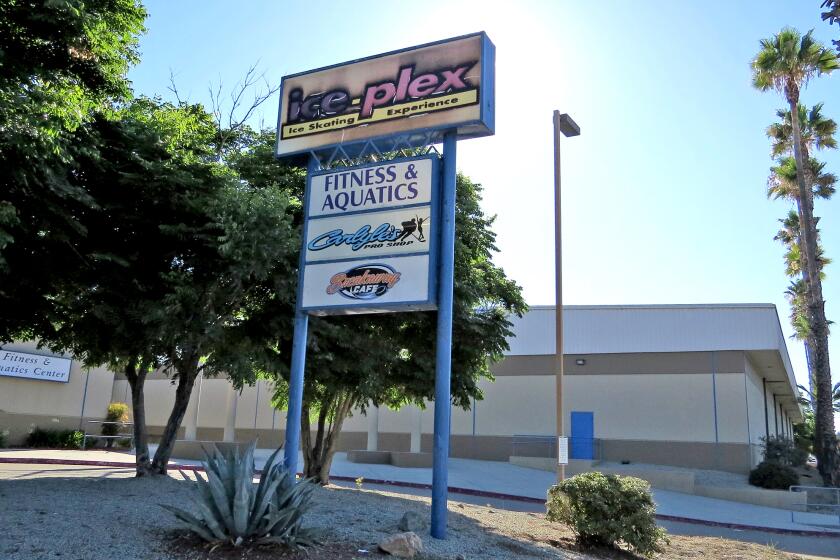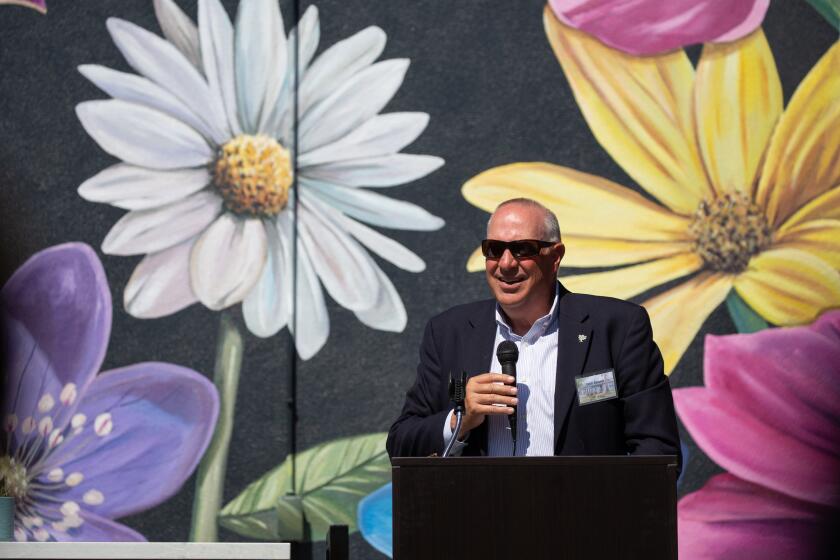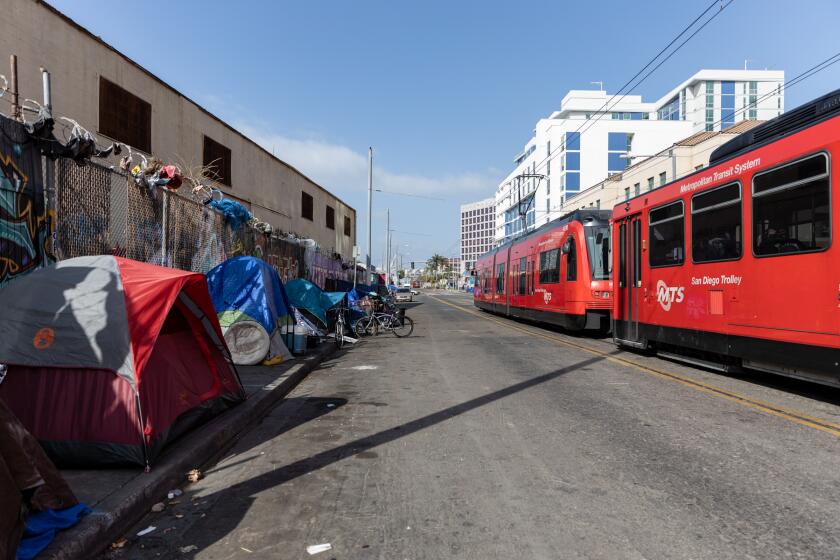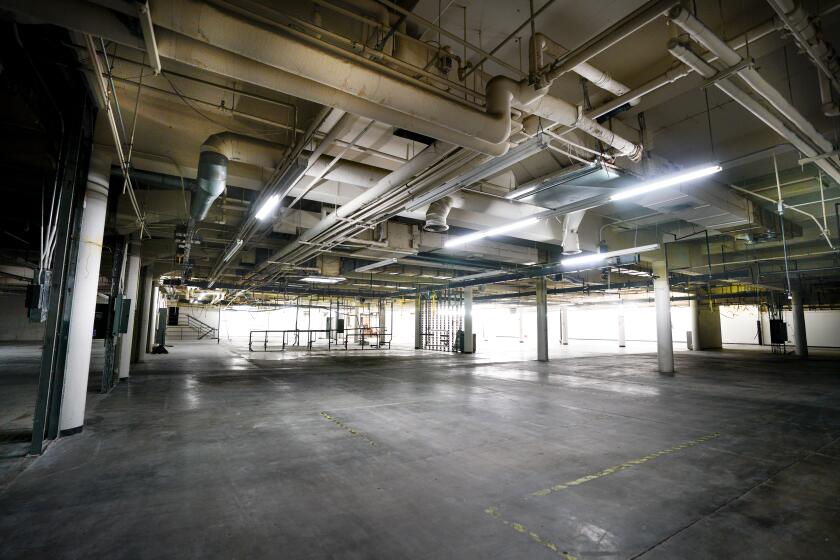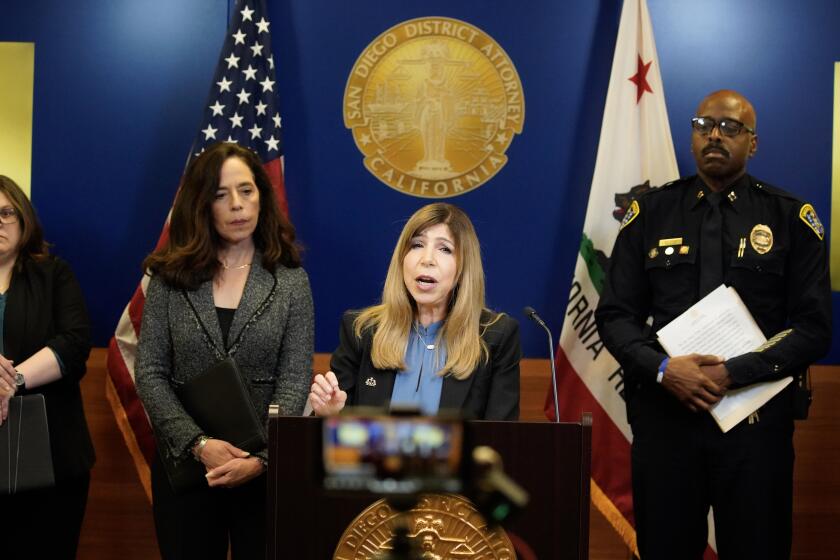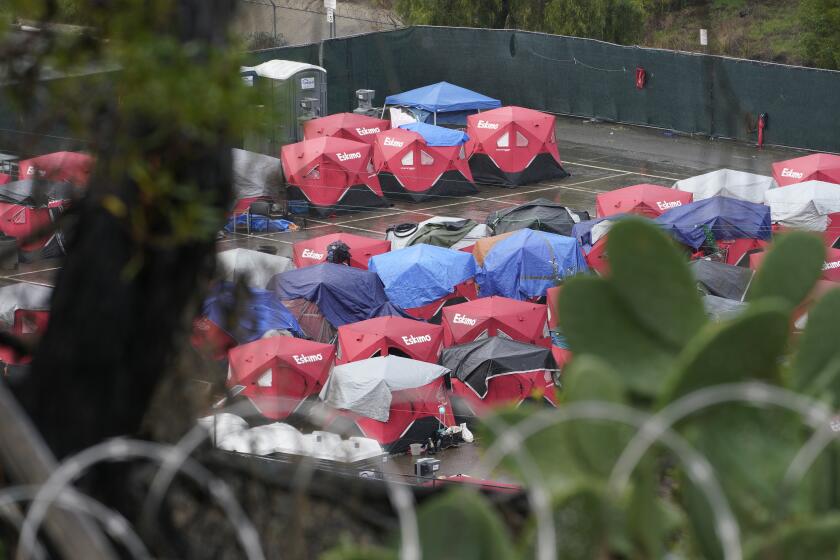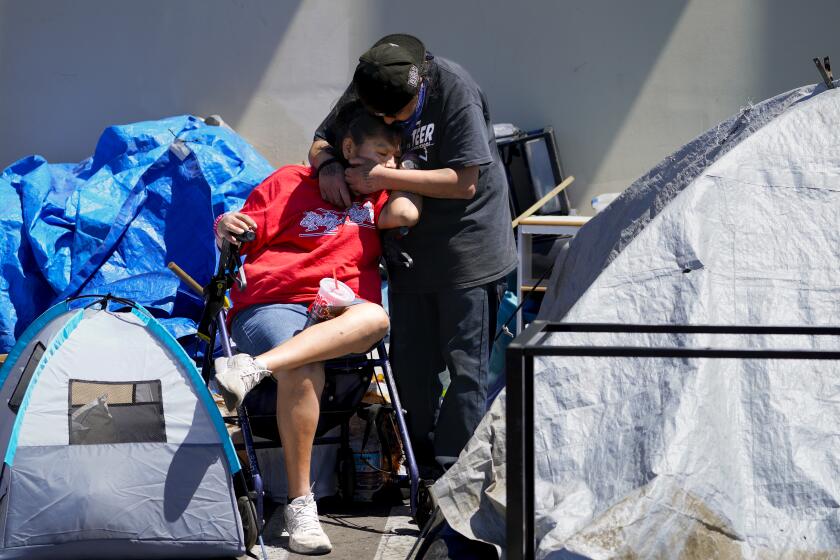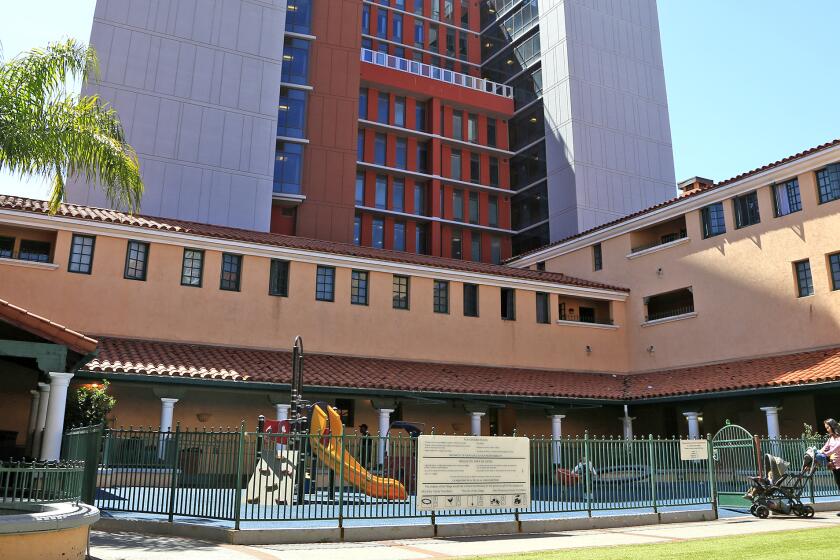Homeless people who live in their cars see 24-hour parking as long overdue
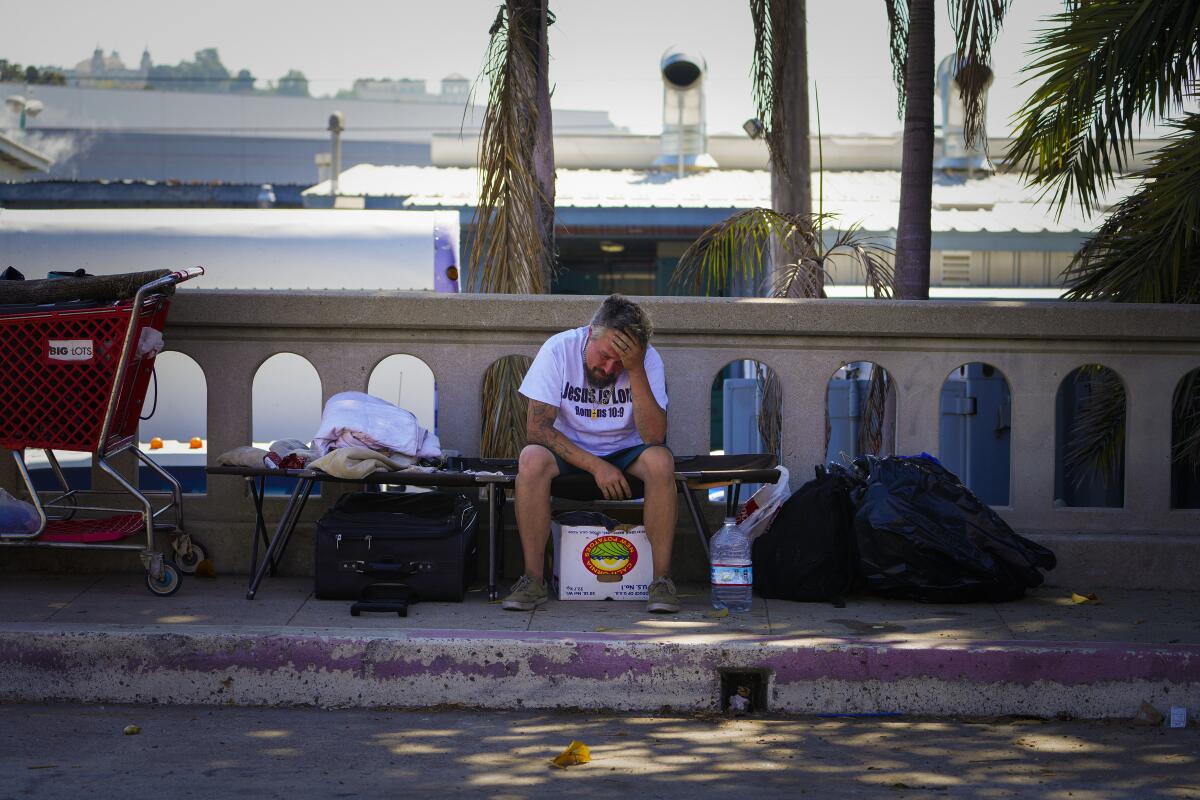
Vista also takes step toward opening its first safe parking lot
As police cracked down on people living in RVs, vans and cars with expired registrations last week, many of the vehicle occupants said they would have parked in one of the city’s lots designated for homeless people if only it were open 24 hours.
They may get their wish in a few months.
The San Diego City Council last week unanimously agreed to fund 24-hour operations at an 86-space parking lot in Mission Valley for homeless people living in vehicles.
San Diego funds three safe parking lots, the term for parking lots for homeless people who live in vehicles, and the Mission Valley location on Mission Village Drive was the only one to allow recreational vehicles. The total cost of all three lots in the new fiscal year will be $1.4 million, with $444,000 from Community Development Block Grant CARES Act funds going toward the expanded hours.
In an unrelated move, the Vista City Council on Tuesday discussed creating a 25-space safe parking lot in their city. It would be the second one in North County, with an Encinitas lot already operating.
The Mission Valley lot opened in June 2019, and it soon became apparent that RV dwellers were avoiding the lot. An official from Jewish Family Service of San Diego, which operates the city’s three safe parking lots, said at the time that only three RVs had used it in the first two weeks.
Jewish Family Service Chief of Staff Chris Olsen said last week that the lot has an average of 70 vehicles, including just eight RVs. The number of RVs increases to about 17 during the winter, he said.
RV dwellers have said they do not like the parking lot because they had to be out every day at 7 a.m. and could not return until 6 p.m. Having little money to operate their gas-guzzling vehicles, many opted to take their chance parking on city streets in violation of the city’s oversized vehicle ordinance prohibiting RVs from parking on public streets from 2-6 a.m.
On Monday, San Diego City Council members heard highlights of a two-year study on the three lots conducted by UC San Diego’s Department of Urban Studies and Planning.
Stacey Livingstone, a UC San Diego doctoral candidate in sociology who worked on the study, told council members that 180 people were interviewed in the study, and it was resoundingly clear that a 24-hour safe parking lot was desired.
Olsen said the conversion to 24-hour service will require adding more security and case workers, and he expected the transition could be complete by the end of summer.
For some RV dwellers and others living in vehicles, the transition cannot come fast enough.
In the same week as the City Council voted to expand the parking lot’s hours, the city began cracking down on encampments and oversized vehicles on Pacific Highway and Anna Avenue, which runs parallel to the highway in an industrial area just north of Old Town.
“They towed my bus?” J.P. Palmar said as he walked up to where he had parked his 1969 Volkswagen Westfalia van Wednesday morning. “But it had handicap plates on it!”
Palmer said he had been away that morning working on an RV he parks at a lot near SeaWorld, but others on Anna Avenue told him they saw his van towed away. He was irate and didn’t want to talk much, but before catching a ride back to his RV he said he was 87 and had been homeless eight years.
An officer on the street that morning said about four vehicles had been towed, but none would be towed if their owners were present.
That’s not always the case.
Eric Barber, 36, sat on a cot on the side of Anna Avenue and recalled a night two weeks ago when he and his wife pulled into a parking lot at Dana Landing. An officer noticed the tags had expired on their 1995 Mercury Villager van and approached the couple.
Barber said they were told to get out, and the van was towed to an impound yard.
“It’s too much money,” he said about the $700 impound fee, which was about what he paid for the van. Barber estimates the cost in the past week had increased to $1,000, and more costs would follow if he were to take it to a garage for repairs so it would pass a smog test.
He knew about the city’s safe lots, but said his wife had never wanted to go to one.
“You’ve got to be in at a certain time and out at a certain time,” he said about her reluctance. “If that didn’t exist, we probably would have been all right.”
Jerrod Starbird, 48, has been homeless two years and until Wednesday had been living in a trailer attached to a 1981 Chevy Titan RV parked on Anna Avenue.
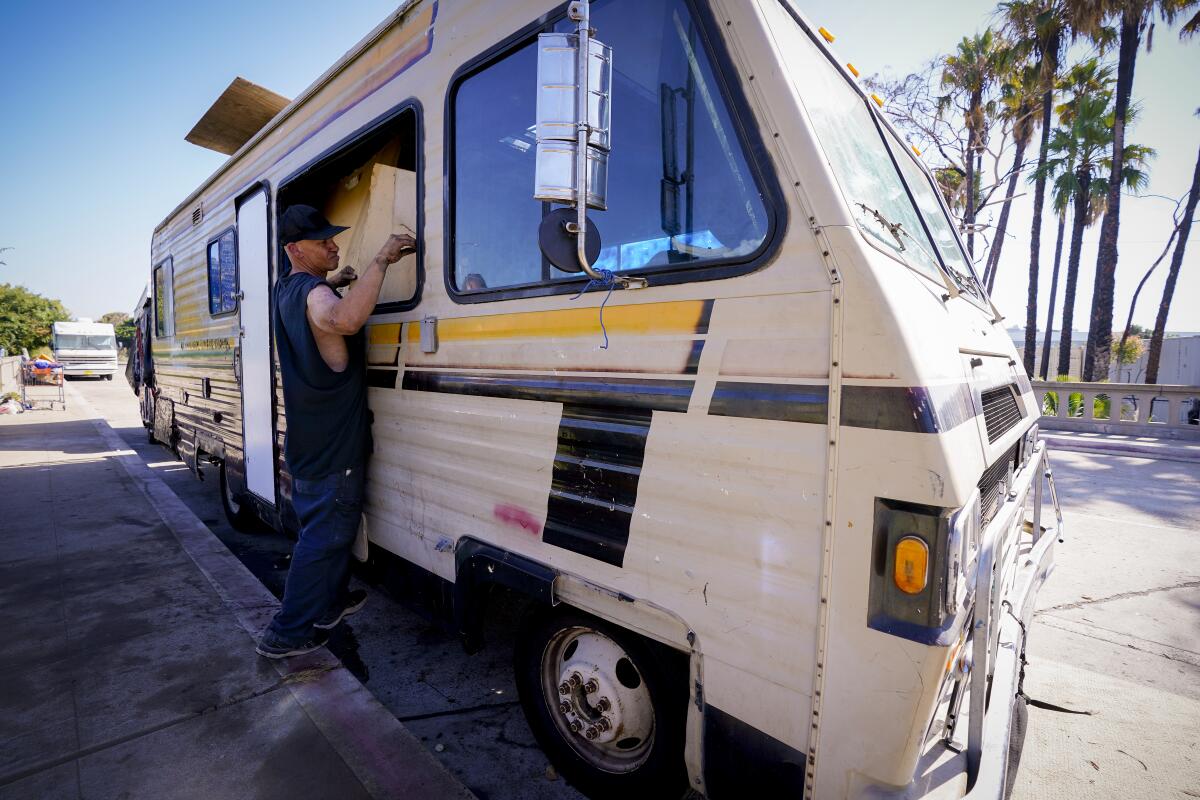
“I’m highly concerned I’ll be towed,” he said as he prepared to drive off after receiving a ticket for having a lapsed registration. While he would not be towed that morning, he had been given a 72-hour notice to move from the street.
His car was towed a month ago, and Starbird said he just received a notice that it would be auctioned if he didn’t pay a $1,500 impound fee. He estimates outstanding tickets would cost another $1,500.
“I’d go in one of the lots, but I can’t get in because of my registration,” he said about city’s safe parking lots.
Olsen, however, said there is a place for him at a Jewish Family Service lot.
“We do not turn people away if they are currently behind on registration, nor do we turn people away if the car insurance has lapsed,” he said.
Jewish Family Service also will help people bring their registration up to date, he added.
Leon Qiyam Pogue, a 65-year-old Army vet, is living in a Scion and tent on Anna Avenue and said he watched a VW bus and RV towed that morning,
“This is people’s lives, man,” he said. “If they would have taken this car or impounded that tent, we’d be literally on the street, my wife and I and my dog.
“I talked to the officer and I said, ‘Why are you destroying people’s lives?’” he continued. “And he said, ‘Look, I’ve got a job to do.’ I said, ‘Does it bother you that you’re destroying someone’s life?’ It’s kind of heartless. These people are struggling out here. We’re not committing crimes. We’re struggling.”
Pogue said he would go to a safe parking lot if it were open 24 hours and he were free to come and go during the day, which he has to do twice a week to sell plasma for $120.
Maya Reynolds, 58, has been homeless three years and has a 2003 Mercedes SUV and a 1984 Dodge van on Anna Avenue. She said she had been living in a trailer, but one day an officer approached her and forced her out so it could be impounded for lapsed registration.
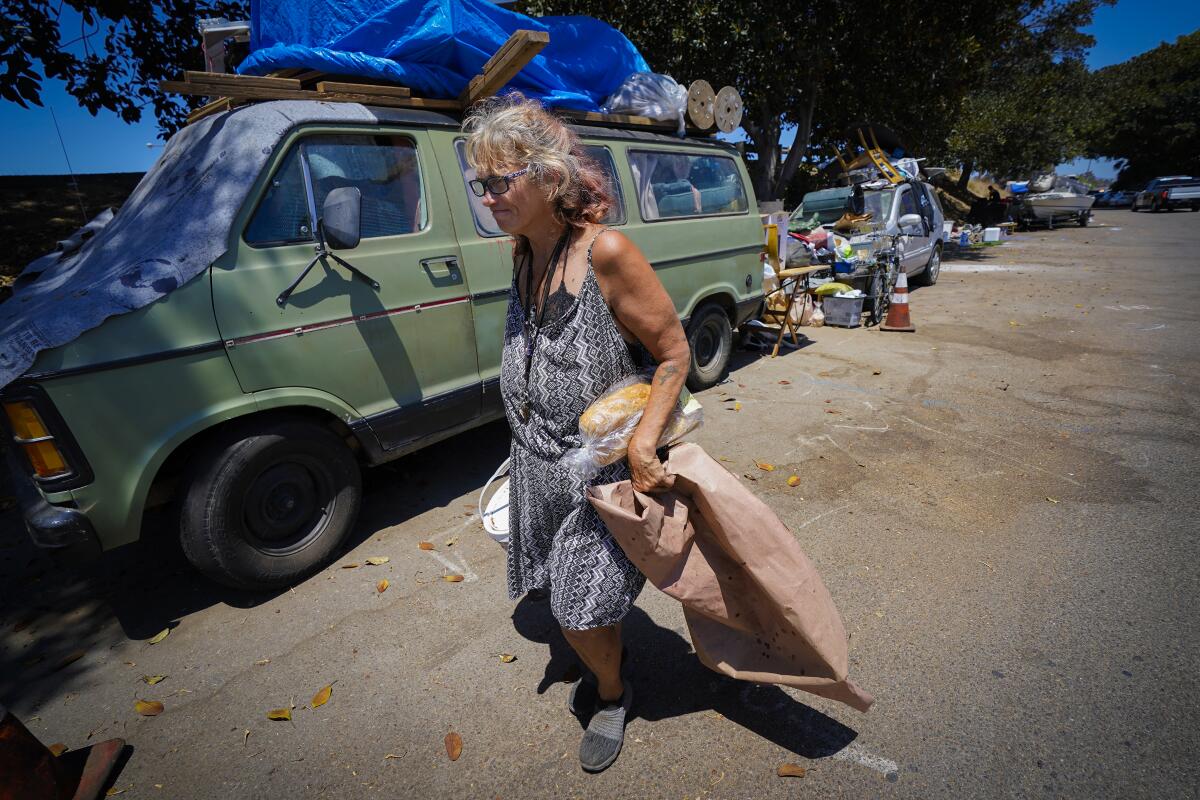
She has heard of safe parking lots, but has not wanted to go to one.
“They do not work, she said. “Everyone needs to leave by 7 a.m. I would go to them if they were open 24 hours.”
The UC San Diego study found most households served in the safe parking programs are made up of adults only, but 20 percent are families with children.
Nearly half of the clients were older than 50, about 28 percent were 60 or older and 14 percent were younger than 20.
Almost 70 percent of participants said they were experiencing homelessness for the first time, and about 44 percent had been homeless for just a month.
Only 15 percent of the clients reported having a mental health issue compared to 26 percent of the general homeless population. About 2 percent said they had a substance use disorder compared to 8 percent in the general population.
The program served 850 people from July 1, 2021, until April 30.
Between Feb. 1, 2019, and Nov. 30, 2020, the UC San Diego study found about 18 percent of clients left the program for permanent or temporary housing. The report states that figure probably is low, however, because they had no exit information for almost 60 percent of the people who left.
Over one six-month period, nearly one-third exited to permanent or temporary housing, including shelters, the study found.
During Monday’s meeting, Councilmember Sean Elo-Rivera asked the council to direct city staff to return before Sept. 30 with assessments of potential safe parking sites in all nine council districts.
Get Essential San Diego, weekday mornings
Get top headlines from the Union-Tribune in your inbox weekday mornings, including top news, local, sports, business, entertainment and opinion.
You may occasionally receive promotional content from the San Diego Union-Tribune.

